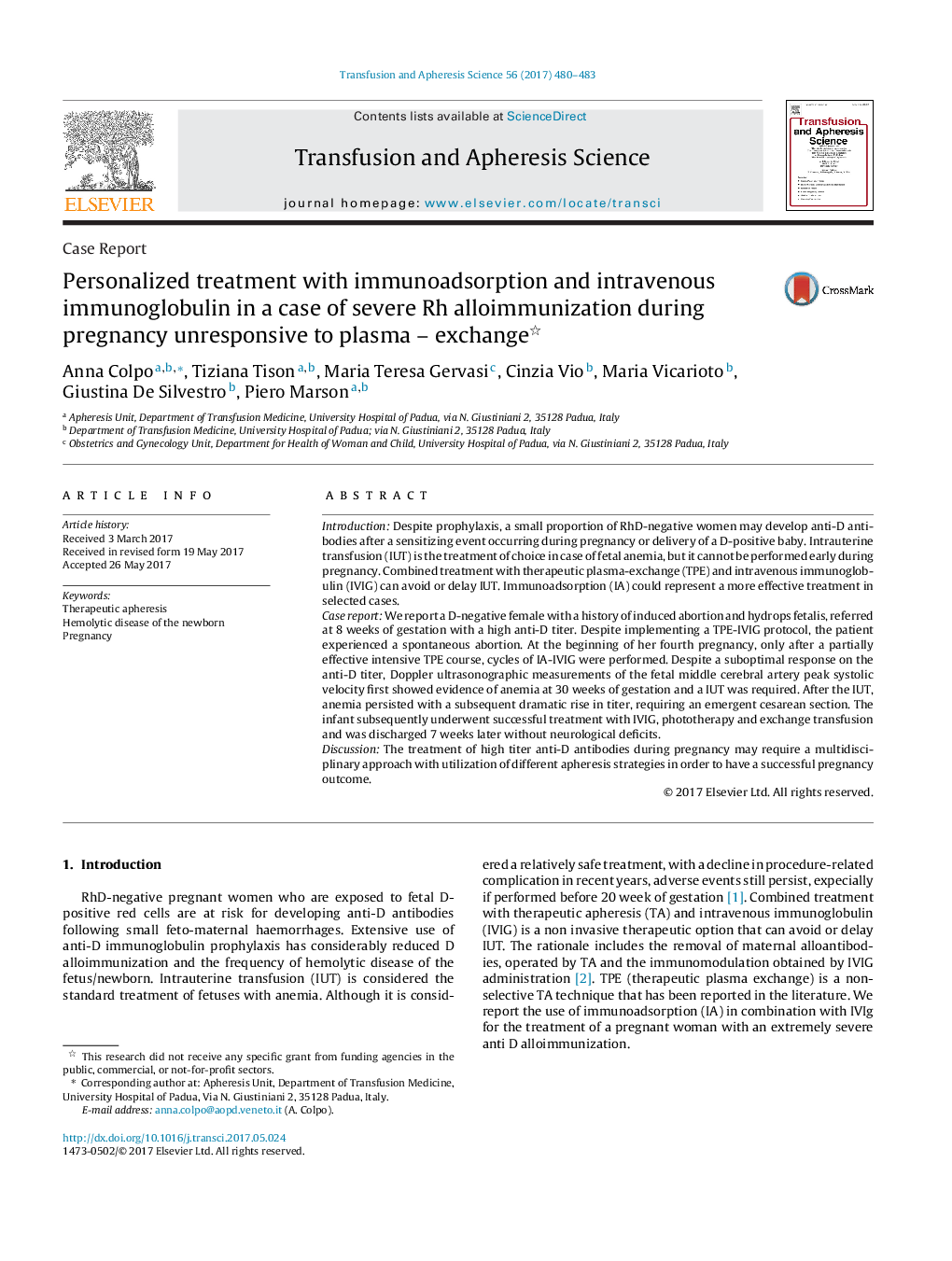| Article ID | Journal | Published Year | Pages | File Type |
|---|---|---|---|---|
| 5664666 | Transfusion and Apheresis Science | 2017 | 4 Pages |
IntroductionDespite prophylaxis, a small proportion of RhD-negative women may develop anti-D antibodies after a sensitizing event occurring during pregnancy or delivery of a D-positive baby. Intrauterine transfusion (IUT) is the treatment of choice in case of fetal anemia, but it cannot be performed early during pregnancy. Combined treatment with therapeutic plasma-exchange (TPE) and intravenous immunoglobulin (IVIG) can avoid or delay IUT. Immunoadsorption (IA) could represent a more effective treatment in selected cases.Case reportWe report a D-negative female with a history of induced abortion and hydrops fetalis, referred at 8 weeks of gestation with a high anti-D titer. Despite implementing a TPE-IVIG protocol, the patient experienced a spontaneous abortion. At the beginning of her fourth pregnancy, only after a partially effective intensive TPE course, cycles of IA-IVIG were performed. Despite a suboptimal response on the anti-D titer, Doppler ultrasonographic measurements of the fetal middle cerebral artery peak systolic velocity first showed evidence of anemia at 30 weeks of gestation and a IUT was required. After the IUT, anemia persisted with a subsequent dramatic rise in titer, requiring an emergent cesarean section. The infant subsequently underwent successful treatment with IVIG, phototherapy and exchange transfusion and was discharged 7 weeks later without neurological deficits.DiscussionThe treatment of high titer anti-D antibodies during pregnancy may require a multidisciplinary approach with utilization of different apheresis strategies in order to have a successful pregnancy outcome.
